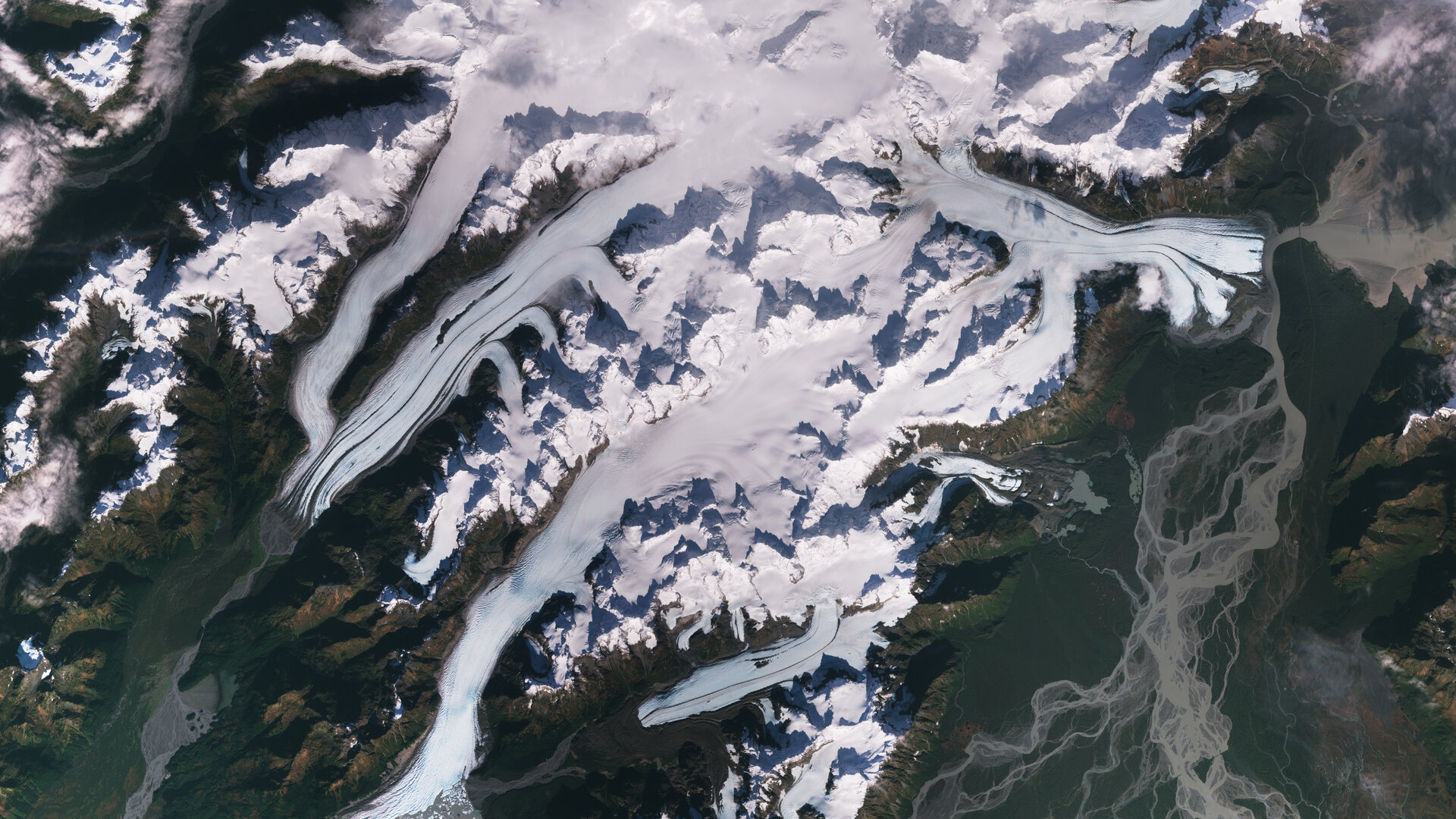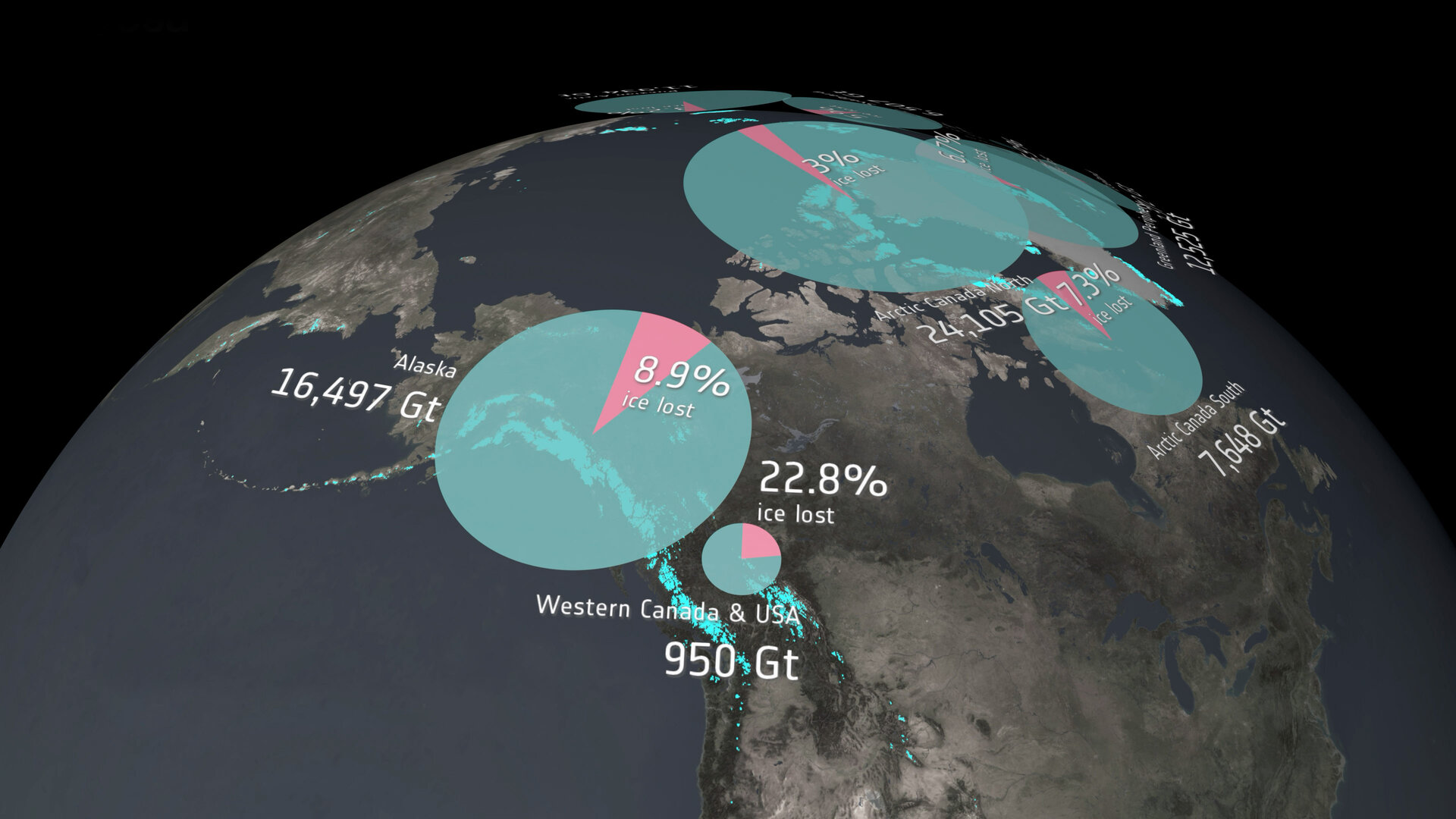20 years of satellite data reveal 'staggering' levels of glaciers melting, sea levels rising
"Every centimeter of sea level rise exposes another 2 million people to annual flooding somewhere on our planet."

Over the past 20 years, glaciers worldwide have lost 273 billion tonnes of ice to a warming world, and this ice loss has driven sea levels to rise at an accelerated pace, according to a decades-long comprehensive analysis based on satellite data.
A time series of yearly ice loss from glaciers between 2000 and 2023 shows the melting ice has resulted in a nearly 2-centimeter (0.7-inch) rise in global sea levels.
"To put this in perspective, the 273 billion tonnes of ice lost annually amounts to what the entire global population consumes in 30 years, assuming three liters per person a day," Michael Zemp, a glaciologist at the University of Zurich in Switzerland, who co-led the analysis, said in a statement.
The findings are based on two decades of observations gathered by several U.S., German and European satellites — some of that data even came from including a few satellites that were not originally designed to monitor glaciers globally. The observations were then analyzed by a large collaboration of 35 research teams led by scientists from the University of Zurich and the University of Edinburgh in Scotland.
This analysis also revealed that the amount of melted ice swung widely across regions, ranging from 2% in the Antarctic to 39% in Central Europe, according to a study on the team's results. Other places witnessed a similar trend: New Zealand lost 29%, Western Canada and the U.S. 23%.
"These numbers are staggering," study co-author Noel Gourmelen of the University of Edinburgh told The Guardian. "They serve as a reminder that things are changing fast in some regions."

Hidden within the results is the alarming trend of accelerated ice loss, scientists say, rising from 231 billion tonnes per year between 2012 and 2023 to 314 billion tonnes per year in the past decade.
Breaking space news, the latest updates on rocket launches, skywatching events and more!
"This is really important as it confirms the pace of glacier melting is accelerating over time," Andrew Shepherd of the Northumbria University in England, who was not involved with the new study, told The Guardian. "Even small amounts of sea level rise matter because it leads to more frequent coastal flooding."
"Every centimeter of sea level rise exposes another 2 million people to annual flooding somewhere on our planet," he added.
Scientists emphasize that the amount of ice that will be lost in the coming years will depend on the extent to which human-driven climate change limits pumping planet-warming gases into the atmosphere.
"Every tenth of a degree of warming that we can avoid will save some glaciers, and will save us from a lot of damage," Zemp told the BBC.
A paper about these results was published on Wednesday (Feb. 19) in the journal Nature.
Join our Space Forums to keep talking space on the latest missions, night sky and more! And if you have a news tip, correction or comment, let us know at: community@space.com.

Sharmila Kuthunur is an independent space journalist based in Bengaluru, India. Her work has also appeared in Scientific American, Science, Astronomy and Live Science, among other publications. She holds a master's degree in journalism from Northeastern University in Boston.
